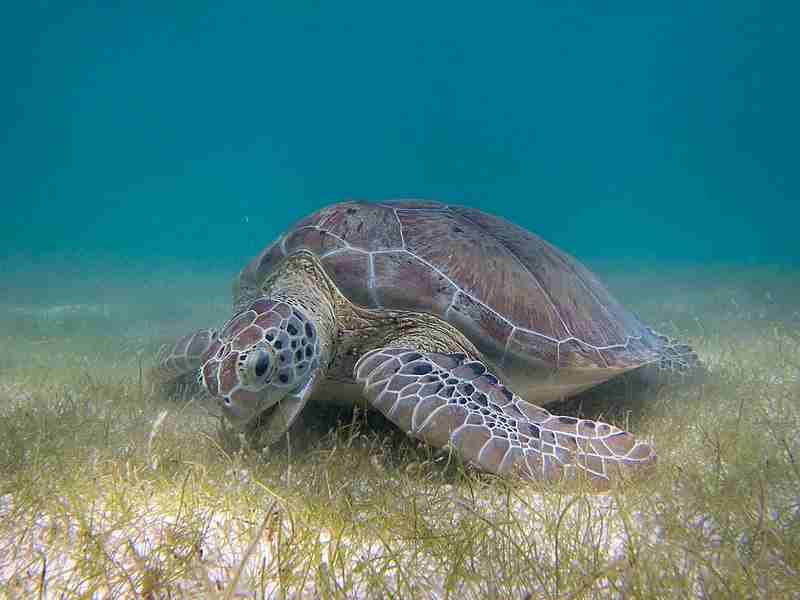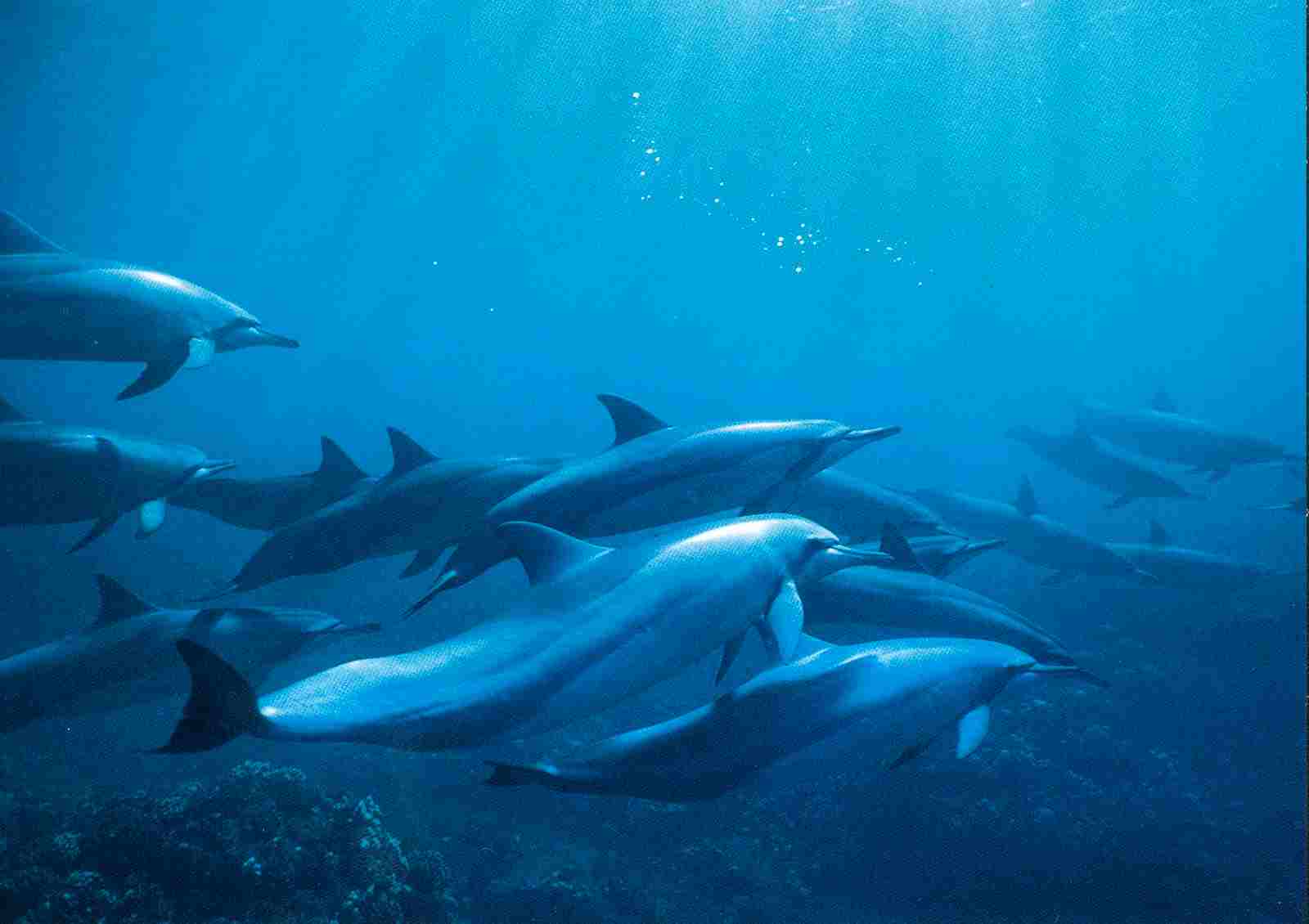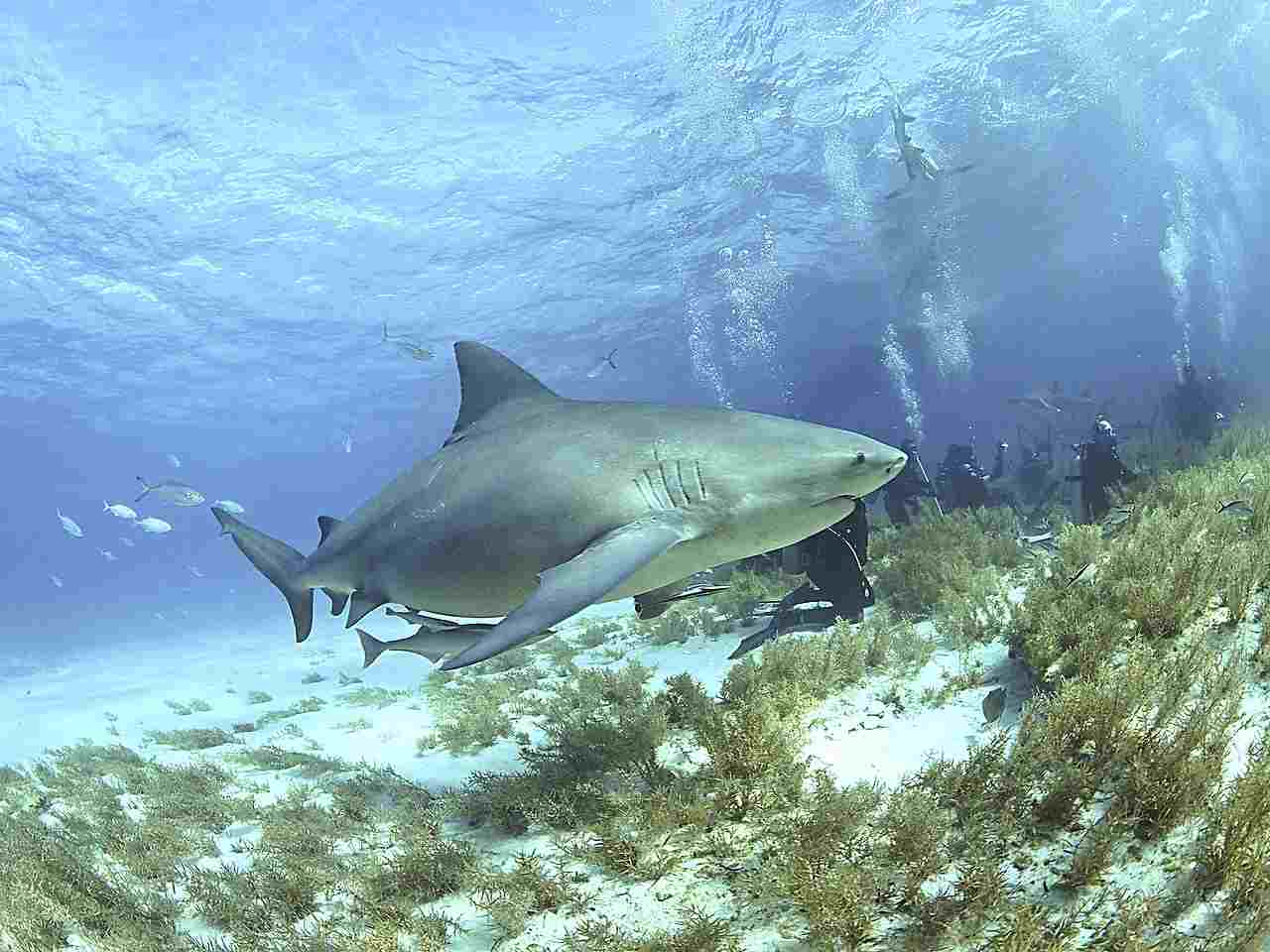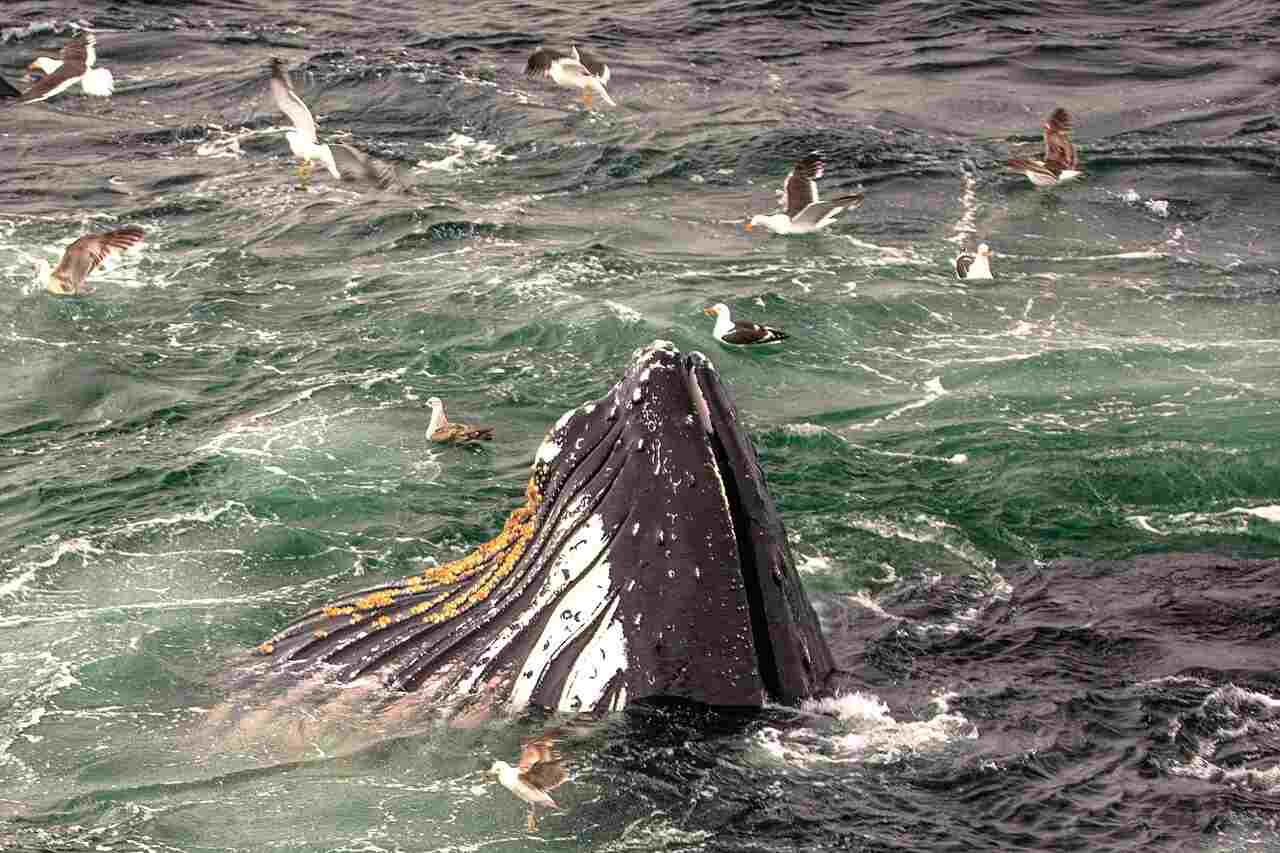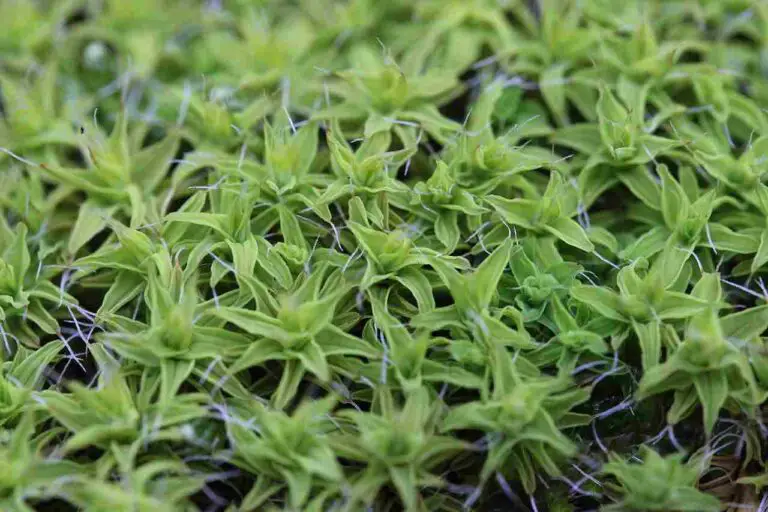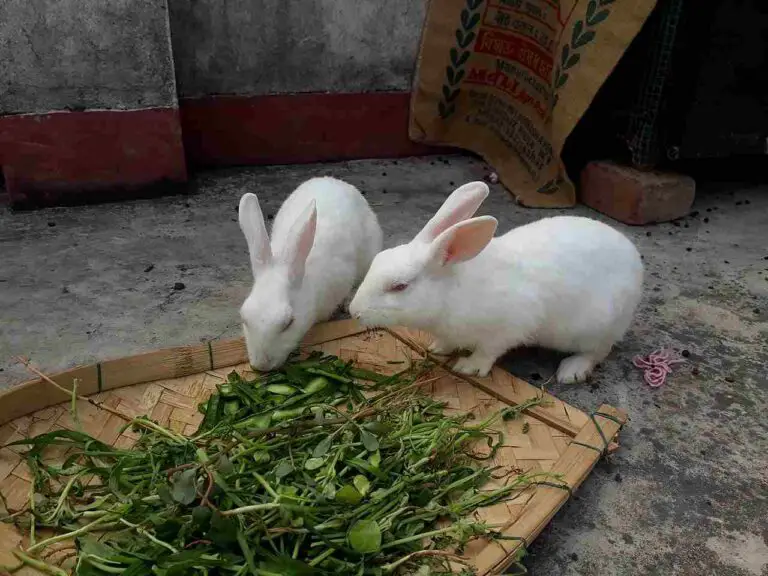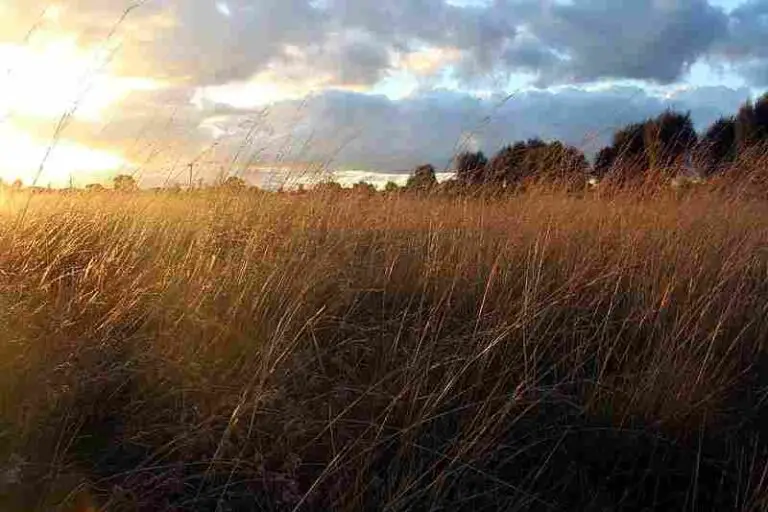Aquatic Food Chain with Five (5) Trophic Levels Discussed
Aquatic food chain comprises of: producers like macrophytes and phytoplankton, primary consumers like herbivorous fish, secondary consumers like predatory invertebrates, tertiary consumers like dolphins, and quaternary consumers like killer whale.
This article discusses the aquatic food chain with five trophic levels, organisms, and their roles/interactions, as well as adaptations, as follows;
1). Aquatic Primary Producers (as part of the Aquatic Food Chain)
Aquatic primary consumers are autotrophic organisms that play a crucial role in the aquatic ecosystem.
The role of primary consumers in the aquatic ecosystem, is to capture solar energy in the form of light; and convert this energy to chemical bioenergy, through a process known as photosynthesis [7].
In the food chain, primary consumers occupy the lowest/basal level, where they provide nutrients and energy (in the form of food or biomass) to organisms in other trophic levels.
Five (5) examples of producers in an aquatic ecosystem are; macrophytes, seaweeds, macroalgae, phytoplankton, marsh vegetation, and mangrove plants.
Each of these is discussed briefly below;
*Macrophytes as Aquatic Producers
Aquatic macrophytes are non-microscopic plants that grow either partly or entirely submerged in freshwater bodies like rivers, streams, lakes and ponds [1].
Due to their growth pattern, they may be alternatively referred to as; submerged aquatic plants, and survive by means of long-term evolution and adaptive features/mechanisms.

Some of the adaptive capabilities of submerged aquatic plants are; specialized roots, and leaves with high gas-exchange and nutrient-uptake efficiency.
Through capture of solar-electromagnetic radiation and production of biomass, they contribute to the food chain as sources of food for herbivorous organisms.
Functions of submerged aquatic plants include;
1. Nutrient cycling
2. Oxygen production
3. Biomass production
4. Creation of micro-habitat for aquatic animals
*Macroalgae and Seaweeds as Aquatic Primary Producers
Macroalgae and seaweeds can both be described as multicellular autotrophs that typically attach themselves to substrates like rock and sediments, in coral reefs, shores, and other coastal zones [11].
Their attachment behavior is for the purpose of mechanical support and anchorage, for which they have developed holdfast structures.
Nutrients and sunlight are absorbed from the water by these autotrophs using specialized structures.
Macroalgae and seaweeds are important food sources to several species of marine organisms, as well as micro-habitats for others. Their contribution to nutrient-recycling is most notable in coastal areas.
*Phytoplankton as an Aquatic Producer
Phytoplankton is a term that refers to free-floating, microscopic cyanobacteria and algae that are usually found in the upper zones of aquatic ecosystems like rivers, lakes and oceans.
These autotrophs are equipped with pigments like chlorophyll that are used in capturing sunlight for photosynthesis.
Phytoplankton are prominent in terms of biological productivity, so that they contribute largely to primary production on a global scale [5].
They also play a key role in the sequestration of carbon, and serve as food source for several aquatic organisms in both freshwater and marine biomes.

*Marsh Vegetation as an Example of Producers in the Aquatic Ecosystem
Marsh vegetation, also called saltmarsh-vegetation, comprises of plants like sedges and grasses that have adaptations enabling them survive and thrive in tidal and intertidal zones like wetlands and estuaries [13].
As a result of their adaptations, saltmarsh plants can tolerate diverse conditions including high salinity, low oxygen concentration, and water-level fluctuations.
They have various important functions in the aquatic ecosystem as well, such as; micro-habitat creation, pollutant-filtration, and sediment stabilization.
By introducing biomass from photosynthesis into their environment, saltmarsh plants act as primary food sources for numerous herbivores.
*Mangrove Plants as Aquatic Producers
Mangrove plants include shrubs and trees that are salt-tolerant, which grow mostly in intertidal areas along the coastline [8].
These plants have various adaptive features that enable them survive in saline/brackish water, including; respiring roots with specialized morphology for anchorage and gas exchange in waterlogged sediments.
In coastal (aquatic) ecosystems, mangrove plants play multiple roles that include erosion-mitigation, micro-habitat creation, and sediment-trapping; while serving as a food source to some herbivores.
2). Aquatic Primary Consumers
Aquatic primary consumers are a group of organisms with herbivorous tendencies, whose food primarily consists of autotrophic producers like algae and plants in their environment.
Through their feeding activities, aquatic primary consumers play an important role in energy-transfer across trophic levels of the food chain, because they serve as the nutritional bridge between primary producers and non-herbivorous consumers.
Some of these consumers are detrivorous, with feeding strategies that revolve around the breakdown of vegetative litter.
Examples of aquatic primary consumers are; benthic invertebrates, zooplankton, filter feeders and herbivorous fish.
*Benthic Invertebrates as Aquatic Primary Consumers
Benthic invertebrates refer to organisms that typically inhabit the floor of aquatic ecosystems like lakes, rivers and oceans; where they attach themselves to bottom substrates like sediments and rocks.
Examples of these organisms are; aquatic insect larvae, worms, clams, and some aquatic snails.
While many of them are herbivores, benthic invertebrates may implement any of various feeding strategies for survival, including predation and detrivory.
Herbivorous benthic invertebrates are primary consumers, and feed on macroscopic plant matter and algae.
Detrivorous members of this group may also consume plant matter, but in the form of organic remains that undergo biodegradation as a result of their feeding activities.
Benthic invertebrates are instrumental toward nutrient-cycling, energy transfer and breakdown of biomass. They also serve as food sources to higher aquatic organisms.
*Zooplankton as Aquatic Primary Consumers
Zooplankton refer to drifting, small organisms that occur in the water column of aquatic ecosystems.
They mainly consume phytoplankton, and relatively-large zooplankton may feed on smaller zooplankton.
Krill and copepods are examples of zooplankton that are herbivorous and primarily depend on phytoplankton as a food source [14].

As indicated above, not all zooplankton are herbivores. Rather, some (like those who prey on smaller zooplankton) are carnivores, while others are omnivores.
Zooplankton that are herbivorous, are important to the transfer of energy from producers to organisms in higher trophic levels. These organisms, such as whales and fish, may consume zooplankton as part of their diet.
*Filter Feeders as Aquatic Primary Consumers
As the name implies, filter feeders are aquatic organisms whose feeding strategy comprises of extracting edible materials from water.
To achieve this, they have specialized structures (that vary in detail from one individual to another); that filter planktonic matter and other forms of biomass, which they consume.
Examples of of aquatic filter feeders are sponges and bivalves like mussels [10].
Through their activities, filter feeders help maintain the quality of water in aquatic ecosystems, and remove suspended particulate materials that could degrade the water and make it unsafe.
They also play a role in the cycling of nutrients.
*Herbivorous Fish as Aquatic Primary Consumers
There are several fish in aquatic ecosystems that have herbivorous feeding habits.
These organisms consume various forms of autotrophic material including detritus from plants, algae, and living aquatic plants.
Some examples of herbivorous fish are rabbitfish, silver carp and tilapia [4].
To survive in their habitat and role, herbivorous fish have various adaptive features which they utilize, such as specialized intestinal structure and dentition for the mastication and digestion of plant material.
Through their activities, herbivorous fish restrict the spread of algal blooms, feeding on algae and preventing excessive growth.
They are also food sources for predatory aquatic animals in higher trophic levels.
In addition the groups discussed, other invertebrates may also graze on plant matter and algae in the aquatic ecosystem, thereby acting as primary consumers. These include snails and some crustaceans. Their activities ensure the continuous flow of energy through the biome.
3). Aquatic Secondary Consumers (as part of the Aquatic Food Chain)
Aquatic secondary consumers are a group of organisms occupying the third trophic level of the food chain; which feed mainly on primary consumers, in some cases adding other (vulnerable) secondary consumers to their diet.
There are roles played by aquatic secondary consumers in nutrient cycling and energy transfer, which are important to the sustainability of the biome.
By feeding on primary consumers, aquatic secondary consumers transfer energy to tertiary consumers, which consume them as prey.
Various adaptive characteristics can be traced to secondary consumers, including behavioral strategies which they use for survival.
Examples of aquatic secondary consumers are; predatory invertebrates, some birds, carnivorous fish; marine reptiles and marine mammals.
*Predatory Invertebrates as Aquatic Secondary Consumers
Predatory invertebrates in aquatic ecosystems include insects like dragonfly larvae, some mollusks, and large crustaceans.
Adaptations of these organisms for their feeding habit include venomous appendages, strong jaws and pincers, among others.
Their activities are important toward the regulation of prey populations including small fish and aquatic invertebrates; which helps to sustain the ecosystem.
*Birds as Aquatic Secondary Consumers
Some species of birds in aquatic environments may function as secondary consumers.
Examples of such birds are; kingfishers, pelicans and herons; which consume aquatic invertebrates and fish [12].
Adaptations of birds for aquatic feeding include keen eyesight, specialized beaks, as well as highly-evolved flight.

In aquatic environments where larger predators do not occur, birds may act as apex predators. Their activities are essential for the cycling of nutrients in the biome.
*Carnivorous Fish as Secondary Consumers
Several species of fish in aquatic ecosystems have carnivorous feeding habits, so that they tend to prey on invertebrates and smaller fish, among other aquatic organisms.
Examples of such fish are; pike, barracuda and bass [6].
Adaptations of carnivorous fish in aquatic ecosystems include streamlined morphology for swift navigation, keen sensory capabilities, and sharp teeth. These features enable them detect, as well as capture and consume, prey.
The activities of carnivorous fish helps in the regulation of primary consumer populations, and the establishment of aquatic ecosystem structures.
*Marine Reptiles as Secondary Consumers
Some reptiles in the marine environment can be considered secondary consumers.
They include marine iguanas and sea turtles; which consume both animal and plant matter like invertebrates (including crustaceans), seagrasses and algae.

For reptiles in the aquatic ecosystem to function effectively as secondary consumers, they require a set of adaptations like specialized digestive tracts, teeth, and strong jaws which enable them consume their dietary preferences.
Being (usually) omnivorous, such reptiles contribute immensely to nutrient cycling in their environment.
*Marine Mammals as Secondary Consumers in the Aquatic Ecosystem
There are multiple mammals in the marine ecosystem that can be described as secondary consumers.
They include dolphins, sea lions and seals; which are known to consume other marine organisms such as fish.
Some adaptations of these mammals for their role are; specialized teeth, advanced swimming ability, and streamlined bodies.
In the absence of larger and/or more-advanced consumers, they may function as apex predators within their territory.
4). Aquatic Tertiary Consumers
Aquatic tertiary consumers include all organisms occupying the fourth trophic level of the food chain, whose food comprises of both primary and secondary consumers.
These organisms often function as the overall apex consumers, asides in marine ecosystems where species richness and diversity are high enough to produce a fifth trophic level.
Activities of tertiary aquatic consumers help in the regulation of population sizes, as well as in the development of organic adaptations. In the same vein, they posses some adaptive characteristics which enable them capture and consume prey efficiently.
Examples of aquatic tertiary consumers are large dolphins, sharks, aquatic monitor lizards, and some highly-evolved seabirds.
*Large Carnivorous Fish as Aquatic Tertiary Consumers
Distinctively large dolphins, alongside sharks, can be seen as tertiary consumers in aquatic ecosystems.
Like their counterparts in the secondary consumer-level, these fish have various adaptations such as streamlined bodies, sharp teeth, and advanced sensory capability; that enable them survive.
They also influence the behavior, adaptation, and population-dynamics of organisms in lower trophic levels.
*Aquatic Monitor Lizards as Tertiary Consumers
Aquatic reptiles that can be classified as tertiary consumers include some monitor lizard species like the water monitor (Varanus salvator), which occurs in parts of Southeast and Southern Asia [9].
These reptiles feed on crustaceans and fish, among other aquatic organisms.
They may act as apex predators in the absence of quaternary consumers, and contribute to the flow of nutrients and energy within the ecosystem.

5). Aquatic Quaternary Consumers (as part of the Aquatic Food Chain)
Aquatic quaternary consumers or apex predators are organisms that occupy the overall highest trophic level of the food chain/energy pyramid.
These organisms sometimes have the biological advantage of being able to prey on consumers in all levels below them. In other cases, they may not prey directly in tertiary consumers, by exercise more dominance and control over resources in the ecological hierarchy.
Some features of aquatic quaternary consumers that make them efficient in their role include; superior size, strength, speed, and/or sensitivity.
Examples of aquatic quaternary consumers are; saltwater crocodile, killer whale (orca), polar bear, and large sharks.
*Saltwater Crocodile as an Aquatic Quaternary Consumer
Saltwater crocodile is a large reptile that may be found in estuaries and coastal areas.
They are apex predators within their environment, having strong jaws and a powerful bite-force that makes them formidable as hunters [3].
Prey for the saltwater crocodile includes mammals, crustaceans, fish, and birds.
Saltwater crocodiles are highly adaptable, so that they may operate in both aquatic and terrestrial zones.
Their hunting strategy is based mainly on stealth and ambush; which enables them prey on a wide range of animals.
The presence of saltwater crocodiles in aquatic ecosystems, influences other organisms (especially those in lower trophic levels) in terms of their adaptation(s) for survival, and their spatial distribution.

*Killer Whale as a Quaternary Consumer in the Aquatic Ecosystem
The killer whale or orca, is a mammalian, aquatic apex predator that is arguably iconic among marine tertiary consumers.
Killer whales are biologically advanced compared to other aquatic animals; and are highly adaptable to biotic and abiotic trends in their surroundings.
Food for the killer whale comprises of other aquatic mammals like sea lions, dolphins and seals, alongside fish.
Adaptations of the killer whale for survival include social behavior, swimming ability, significant sensory capability, powerful jaws and sharp teeth.
It is not uncommon for orcas to implement cooperative strategies with vocalizations, when hunting prey [15]. Their activities affect energy flow, and regulate the population and behaviors of organisms which they prey on (or compete with).
*Polar Bear as an Aquatic Quaternary Consumer
Polar bears are adaptive mammals that mainly occur in Arctic regions, including tundras and polar coastlines.
They heavily depend on food sourced from the marine ecosystem, so that they may be classified as active aquatic consumers.
Polar bears are apex predators in their territory, and prey on other mammals like seals, as well as on fish.
Their adaptive features for survival in marine environments include;
1. Swimming capability
2. Fat layer for insulation (called the blubber)
3. Keen sensitivity
Like other apex predators, polar bears significantly influence the population size and distribution, of consumers beneath them in the aquatic food chain.
*Large Sharks as Tertiary Consumers in the Aquatic Ecosystem
Various large species of sharks can be classified as quaternary consumers in saltwater aquatic ecosystems.
Some of these include bull sharks, great white sharks, and tiger sharks.
These sharks may prey on seals, fish, and aquatic reptiles like sea turtles.
Features of large sharks include keen sensitivity, serrated teeth [2], and streamlined morphology for efficient navigation.
Due to their size and biological advancement, large sharks may compete effectively with other quaternary consumers like whales, in aquatic ecosystems.
Conclusion
Aquatic food chain comprises of;
1. Primary Producers like macrophytes and phytoplankton
2. Primary Consumers like herbivorous fish and filter feeders
3. Secondary Consumers like predatory invertebrates and some aquatic birds
4. Tertiary Consumers like dolphins and aquatic monitor lizards
5. Quaternary Consumers like saltwater crocodile and killer whale
References
1). Chambers, P. A.; Lacoul, P.; Murphy, K. J.; Thomaz, S. M. (2007). "Global diversity of aquatic macrophytes in freshwater." Hydrobiologia 595:9-26. Freshwater Animal Diversity Assessment (pp.9-26). Available at: https://doi.org/10.1007/978-1-4020-8259-7_2. (Accessed 23 June 2023).
2). Ebersole, J. A.; Kelosky, A. T.; Huerta-Beltrán, B. L.; Cicimurri, D. J.; Drymon, J. M. (2023). "Observations on heterodonty within the dentition of the Atlantic Sharpnose Shark, Rhizoprionodon terraenovae (Richardson, 1836), from the north-central Gulf of Mexico, USA, with implications on the fossil record". PeerJ. 2023 Apr 12;11:e15142. Available at: https://doi.org/10.7717/peerj.15142. (Accessed 23 June 2023)..
3). Erickson, G. M.; Gignac, P. M.; Steppan, S. J.; Lappin A. K.; Vilet, K. A.; Brueggen, J. D.; Inuoye, B. D.; Kledzik, D.; Webb, G. J. W. (2012). "Insights into the Ecology and Evolutionary Success of Crocodilians Revealed through Bite-Force and Tooth-Pressure Experimentation". PLoS ONE 7(3): e31781. Available at: https://doi.org/10.1371/journal.pone.0031781. (Accessed 24 June 2023).
4). Fathy, M.; Abdel-Aziz, M. F. A.; Hassan, H. U.; Yones, A. M. A. S.; Abdel-Tawwab, Y. A.; Metwalli, A. A. (2021). "Assessing the effect of different feeding frequencies combined with stocking density, initial weight, and dietary protein ratio on the growth performance of tilapia, catfish and carp." Scientific African 12(3). Available at: https://doi.org/10.1016/j.sciaf.2021.e00806. (Accessed 23 June 2023).
5). Firme, G.; Hughes, D.; Laiolo, L.; Roughan, M.; Suthers, I.; Doblin, M. (2022). "Contrasting phytoplankton composition and primary productivity in multiple mesoscale eddies along the East Australian coast." Deep Sea Research Part I Oceanographic Research Papers 193(5):103952. Available at: https://doi.org/10.1016/j.dsr.2022.103952. (Accessed 23 June 2023).
6). Grubich; J. R.; Rice, A. N.; Westneat, M. W. (2008). "Functional morphology of bite mechanics in the great barracuda (Sphyraena barracuda)." Zoology (Jena). 2008;111(1):16-29. Available at: https://doi.org/10.1016/j.zool.2007.05.003. (Accessed 23 June 2023).
7). Hintz, N. H.; Schulze; B.; Wacker, A.; Striebel, M. (2022). "Ecological impacts of photosynthetic light harvesting in changing aquatic environments: A systematic literature map." Wiley, Ecology and Evolution 12(3). Available at: https://doi.org/10.1002/ece3.8753. (Accessed 23 June 2023).
8). Isa, N. M. Md.; Suratman, M. N. (2021). "Structure and Diversity of Plants in Mangrove Ecosystems." Mangroves: Ecology, Biodiversity and Management (pp.361-369). Available at: https://doi.org/10.1007/978-981-16-2494-0_15. (Accessed 23 June 2023).
9). Koch, A.; Auliya, M.; Schmitz, A.; Kuch, U.; Böhme, W. (2007). "Morphological studies on the systematics of South East Asian Water Monitors (Varanus salvator complex): nominotypic populations and taxonomic overview." Available at: https://www.semanticscholar.org/paper/Morphological-Studies-on-the-Systematics-of-South-(-Koch-Auliya/208d62d154aa3abe6d83e33167a27e473ae96bd7. (Accessed 23 June 2023).
10). Larsen, P.; Riisgård, H. U. (2022). "Size-Specific Growth of Filter-Feeding Marine Invertebrates." Journal of Marine Science and Engineering 10(1226):1-11. Available at: https://doi.org/10.3390/jmse10091226. (Accessed 23 June 2023).
11). Morrison, L.; Feely, M.; Stengel, D.; Blamey, N.; Dockery, P.; Sherlock, A.; Timmins, E. (2009). "Seaweed attachment to bedrock: Biophysical evidence for a new geophycology paradigm." Geobiology 7(4):477-87. Available at: https://doi.org/10.1111/j.1472-4669.2009.00206.x. (Accessed 23 June 2023).
12). Pollux, B. J. A. (2010). "The experimental study of seed dispersal by fish (ichthyochory)." Freshwater Biology, Volume 56, Issue 2 p. 197-212. Available at: https://doi.org/10.1111/j.1365-2427.2010.02493.x. (Accessed 24 June 2023).
13). Ren, J.; Chen, J.; Xu, C.; van de Koppel, J.; Thomsen, M. S.; Qui, S.; Cheng, F.; Song, W.; Liu, Q. X.; Xu; C.; Bai, J.; Zhang, Y.; Cui, B.; Bertness; M. D.; Silliman, B. R., Li, B.; He, Q. (2021). "An invasive species erodes the performance of coastal wetland protected areas." Sci Adv. 2021 Oct 15;7(42):eabi8943. Available at: https://doi.org/10.1126/sciadv.abi8943. (Accessed 23 June 2023).
14). Schmidt, K.; Atkinson, A.; Stübing, D; McClelland, J. W.; Montoya, J. P.; Voss, M. (2003). "Trophic relationships among Southern Ocean copepods and krill: Some uses and limitations of a stable isotope approach." Limnology and Oceanography 48(1):277-289. Available at: https://doi.org/10.4319/lo.2003.48.1.0277. (Accessed 23 June 2023).
15). Wellard, R.; Erbe, C.; Fouda, L.; Blewitt, M. (2015). "Vocalisations of Killer Whales ( Orcinus orca ) in the Bremer Canyon, Western Australia." PLoS ONE 10(9):e0136535. Available at: https://doi.org/10.1371/journal.pone.0136535. (Accessed 23 June 2023).
